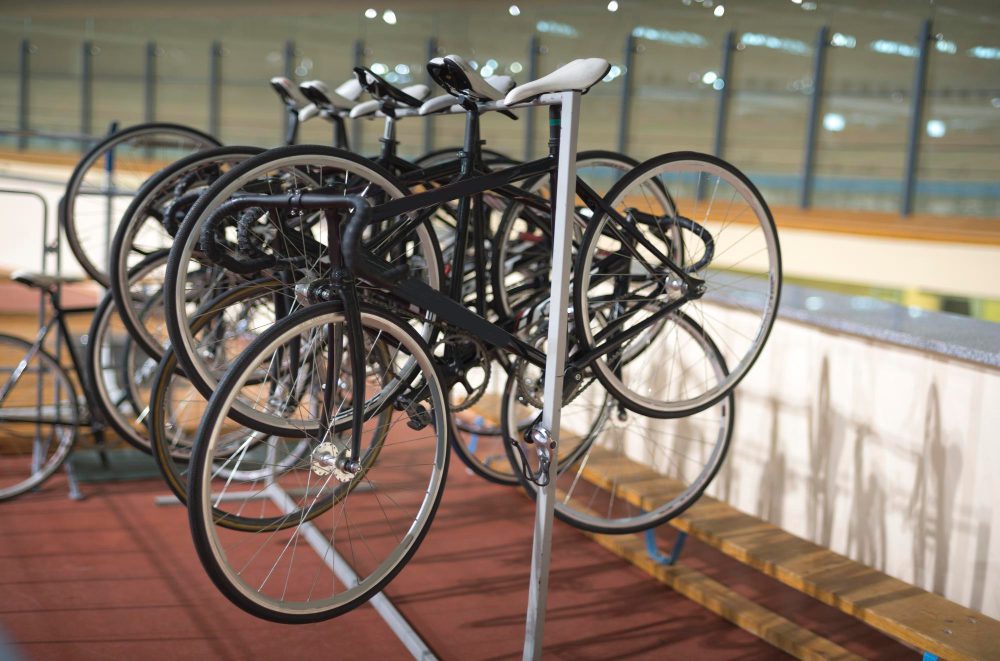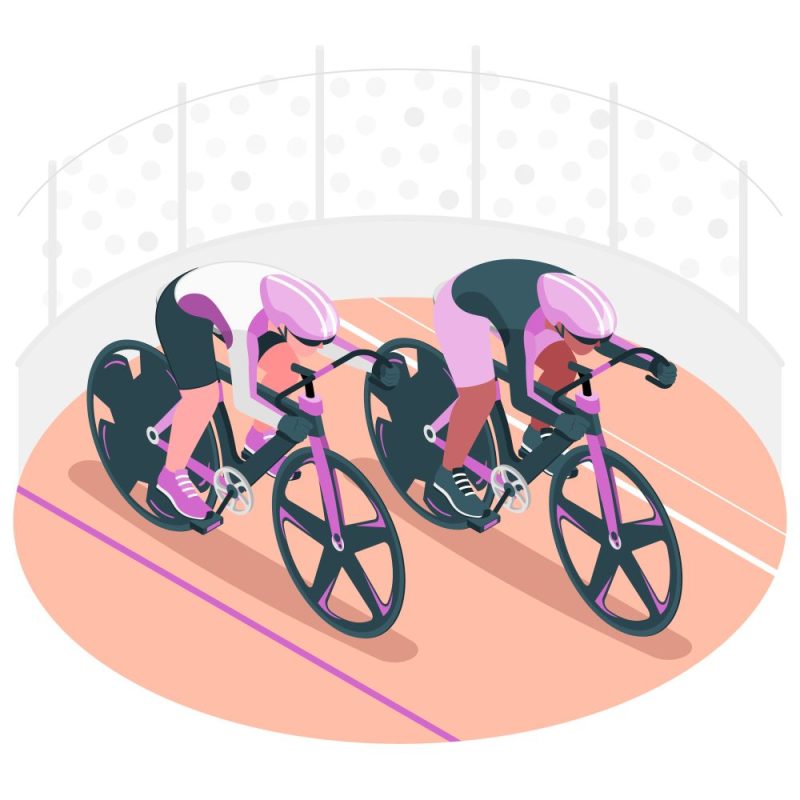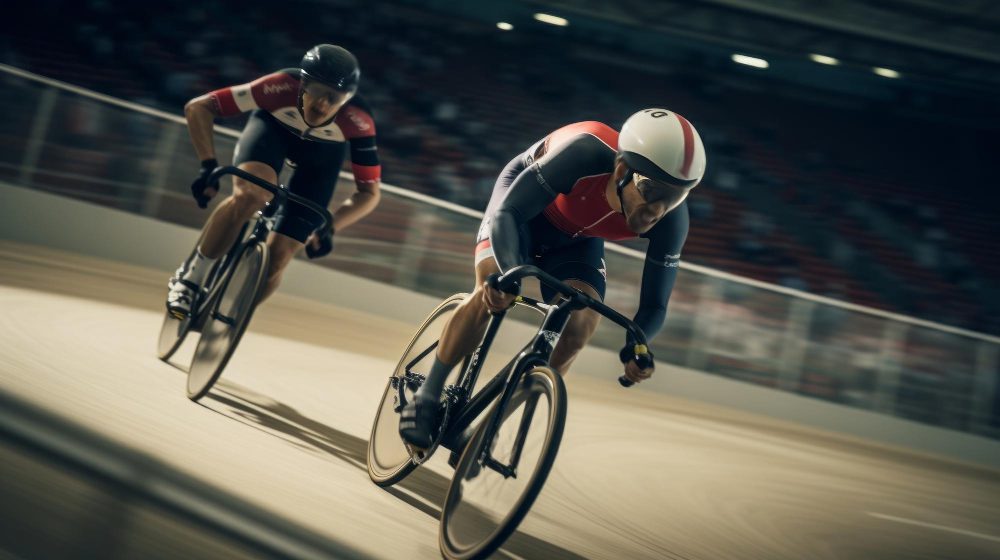Is it better to cycle faster or with more resistance?
When it comes to cycling, many people wonder whether it is better to focus on speed or resistance. The answer ultimately depends on your fitness goals and what you hope to achieve from your cycling workouts. In this article, we will explore the benefits and considerations of both cycling faster and cycling with more resistance, helping you make an informed decision about which approach might be best for you.
The Benefits of Cycling Faster
Cycling at a faster pace can provide several advantages. Firstly, it is an excellent way to improve cardiovascular fitness. Rapid cycling increases your heart rate, improving blood circulation and strengthening your heart muscles. Moreover, cycling faster can help you burn more calories, making it an effective option for those aiming to lose weight or maintain a healthy BMI.
Another benefit of cycling faster is that it can push your endurance to new limits. By challenging yourself to maintain a high speed, you can gradually build stamina and overcome plateaus in your fitness journey. Additionally, cycling at a brisk pace can also boost your mood, releasing endorphins that contribute to feelings of happiness and well-being.
Key Benefits of Cycling Faster:
- Improves cardiovascular fitness
- Burns more calories
- Builds endurance and stamina
- Boosts mood and overall well-being
The Benefits of Cycling with More Resistance
On the other hand, cycling with increased resistance can offer unique advantages. Adding resistance, either through gear selection or using a stationary bike with adjustable tension, engages your muscles more intensively and can lead to greater strength gains. It specifically targets your lower body muscles, including the quadriceps, hamstrings, and glutes.
Cycling with more resistance is especially beneficial for individuals aiming to build lower body strength or tone their muscles. It can help improve your power and explosiveness, making it an ideal option for athletes or those involved in sports that require bursts of speed and strength. Furthermore, cycling against resistance also puts less strain on your joints compared to high-impact activities like running or jogging.
Key Benefits of Cycling with More Resistance:
- Builds lower body strength and muscle tone
- Enhances power and explosiveness
- Reduces joint strain
Remember, there is no one-size-fits-all answer to the question of whether it is better to cycle faster or with more resistance. It largely depends on your individual goals and preferences.
If you are primarily focused on improving cardiovascular fitness, increasing speed and intensity may be the way to go. On the other hand, if you want to build lower body strength or engage in sports that require explosive movements, incorporating more resistance into your cycling routine is likely to yield better results.
Ultimately, the best approach may involve a combination of both faster cycling and increased resistance. Varying your workouts and incorporating different training methods can provide a well-rounded fitness regimen, targeting different aspects of your overall health and fitness.
Whichever path you choose, it is essential to listen to your body and progress gradually. Pushing yourself too hard or too quickly can lead to injuries or burnout. Start at a comfortable level and gradually increase the intensity or resistance over time, allowing your body to adapt and grow stronger.
So, whether you prefer to pedal faster or crank up the resistance, the key is to enjoy the ride and find what works best for you. Happy cycling!
Is it better to ride a bike with or without resistance?
Riding a bike is a great way to stay active and improve your cardiovascular fitness, but have you ever wondered if it’s better to ride with or without resistance? Let’s explore the benefits of both options.
Riding with resistance
When you ride a bike with resistance, whether it’s through gears or on a stationary bike with adjustable resistance, you’re adding an extra challenge to your workout. This can help to build strength and power in your leg muscles, particularly your quadriceps. Riding with resistance also increases the intensity of your cardio workout, helping you to burn more calories in less time.
Benefits of riding with resistance:
- Increased muscle strength and power
- Improved cardiovascular fitness
- Higher calorie burn
Riding without resistance
On the other hand, riding a bike without resistance allows for a smoother and more relaxed ride. This can be beneficial if you’re looking for a low-impact workout or if you’re recovering from an injury. Riding without resistance still provides cardiovascular benefits and helps to improve endurance.
Benefits of riding without resistance:
- Low-impact workout
- Gentle on joints
- Improved endurance
“Whether you choose to ride with resistance or without, the most important thing is to find a workout that you enjoy and that suits your fitness goals.”
Ultimately, the decision to ride with or without resistance depends on your personal preferences and fitness goals. If you’re looking to challenge yourself and increase your overall strength, riding with resistance may be more beneficial. However, if you prefer a gentler workout or are recovering from an injury, riding without resistance can still provide significant health benefits.
Remember to always listen to your body and adjust the resistance level accordingly. Whether you choose to ride with resistance or without, the most important thing is to find a workout that you enjoy and that suits your fitness goals. Happy biking!
Why do cyclists spin after a race?
The Importance of Spinning for Cyclists
After completing a challenging race, it is common to see cyclists engaging in a post-race routine called “spinning.” This practice involves cycling at a low-intensity pace on a stationary bike for a period of time. While it may seem counterintuitive to continue cycling after a demanding race, spinning plays a crucial role in the recovery and cooldown process for cyclists.
Benefits of Post-Race Spinning
1. Enhanced Blood Circulation: Spinning helps to flush out lactic acid that has built up in the muscles during the race. By keeping the blood flowing, it aids in the delivery of oxygen and nutrients to the muscles, facilitating faster recovery.
2. Gradual Cool Down: Cycling at a lower intensity allows the body to gradually cool down, preventing the abrupt cessation of exercise from causing dizziness or faintness.
3. Muscle Recovery: Spinning assists in reducing muscle soreness and stiffness by promoting gentle movement and preventing the build-up of metabolic waste products in the muscles.
“Post-race spinning helps cyclists maintain an active recovery, ensuring their bodies receive the necessary stimulus for healing and growth.”
A Sample Post-Race Spinning Routine
Here’s an example of a post-race spinning routine that can benefit cyclists:
- Start with 5 minutes of easy spinning, maintaining a low resistance.
- Gradually increase the resistance and ride for another 10-15 minutes at a comfortable pace. This helps to further stimulate blood flow and aid in cooling down.
- Include a few short intervals where you increase the resistance and pedal at a higher cadence for 20-30 seconds. This helps to flush out any remaining lactic acid.
- Finish with another 5 minutes of easy spinning to promote further cooldown and relaxation.
Incorporating post-race spinning into your routine is an excellent way to optimize recovery and prepare your body for future training or races. So next time you see cyclists spinning after a race, know that it’s an essential part of their recovery process.
Why do Track Bikes Have More Resistance?
Track bikes are specially designed bicycles used for racing on a velodrome, a banked track built specifically for cycling. These bikes have distinct features that differentiate them from regular road or mountain bikes. One noticeable attribute of track bikes is the increased resistance they offer. Let’s explore why track bikes have more resistance and how it benefits the riders.
The Fixed Gear System
One of the primary reasons for the increased resistance on track bikes is the fixed gear system. Unlike other bikes with multiple gears, track bikes have a single fixed gear. This means that the rear cog directly connects to the pedals, resulting in direct power transfer without any freewheel mechanism. The absence of freewheeling creates a constant and uninterrupted pedaling motion, offering greater control over the bike and increasing overall resistance.
Efficient Power Transfer
The fixed gear system also enables efficient power transfer from the rider to the wheels. As there are no gear changes, there is minimal loss of energy due to friction between different gear components. This results in maximum power output, making track bikes ideal for sprinting and short-distance races where explosive acceleration is crucial.
Aerodynamics and Body Positioning
Another factor contributing to the increased resistance on track bikes is the focus on aerodynamics. Track cyclists adopt a more aggressive and aerodynamic body position compared to road cyclists. The lower handlebars, the forward tilt of the body, and the absence of suspension systems reduce wind resistance, allowing riders to maintain higher speeds while experiencing greater resistance.
Training Benefits
The higher resistance on track bikes offers several training benefits to cyclists. It helps in building leg strength and muscular endurance as riders constantly engage their leg muscles during the entire pedal stroke. The increased resistance also promotes improved cardiovascular fitness and anaerobic capacity, making track cycling an excellent form of exercise for overall physical conditioning.
Quote: “Track bikes provide unparalleled control and power transfer, allowing cyclists to experience a unique and exhilarating riding experience.” – Track Cycling Enthusiast
In conclusion, track bikes have more resistance due to their fixed gear system, which offers efficient power transfer, and the focus on aerodynamics and body positioning. The increased resistance provides advantages such as better control, improved training opportunities, and enhanced performance in short-distance races. So, if you’re a cycling enthusiast looking for an intense and challenging ride, consider giving track cycling a try.
How Fast Do Velodrome Bikes Go?
Velodrome biking is a thrilling and fast-paced sport that has gained immense popularity in the UK. With the Olympics and other major events showcasing the incredible speed and agility of velodrome cyclists, many people wonder just how fast these bikes can go. Let’s dive into the world of velodrome biking and explore the impressive speeds achieved by these athletes.
The Need for Speed
Velodrome bikes, also known as track bikes, are designed for one purpose – speed. These specialized bicycles have a fixed gear and no brakes, allowing riders to maximize their power output. The aerodynamic design of the bike, with dropped handlebars and minimal body positioning, helps reduce wind resistance and increase speed.
Record-Breaking Speeds
The fastest speed ever recorded on a velodrome bike is an astounding **81.4 miles per hour** (130.7 kilometers per hour). This record was set by French cyclist François Pervis during a World Cup event in 2013. Such incredible speeds are achieved due to the combination of the cyclist’s strength, skill, and the bike’s design.
The Science Behind the Speed
Several factors contribute to the high speeds reached by velodrome cyclists:
- Power output: Cyclists generate an immense amount of power through their legs, pushing down on the pedals with each rotation.
- Aerodynamics: The streamlined shape of the bike and rider helps minimize air resistance, allowing for faster speeds.
- Optimal gearing: Velodrome bikes have gears specifically tailored for track racing, enabling cyclists to maintain high speeds throughout the race.
“Track cycling is all about speed and tactics. The velodrome bikes are finely tuned machines that allow us to reach incredible speeds while maneuvering around the track.” – British track cyclist, Laura Kenny.
Conclusion
Veledrome bikes are built for speed, with their design, advanced materials, and athlete’s skill combining to produce incredible performances. Whether you are an avid fan or new to the sport, watching cyclists soar around the velodrome at incredible speeds is sure to leave you in awe.



